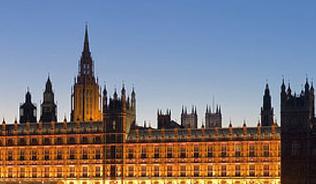Urban areas have become a place of growing focus for the mitigation of climate change, and cities all over the world are increasingly engaging and acting where nations are failing to. As complex systems and places of concentrated consumption, urban areas are acknowledged to have a significant environmental impacts and therefore responsibility in providing solutions. Their low carbon potential and ‘win-wins’ for the environment and society are increasingly recognised. However, in reality it appears that despite good intentions a gap between rhetoric and action persists. I believe we need to think differently about how we approach the problem.
Five years ago I began an EPSRC-funded PhD at the University of the West of England, Bristol, with the aim of exploring “the low carbon futures for the Bristol region”. I swiftly realised that there was limited understanding of the role of cities in transitioning to a low carbon future: what a future low carbon city looks like; how current activities are really contributing to long term goals; and whether sufficient progress is really being made. The second thing I came to realise, less swiftly, was that tackling this subject was more complex than crunching numbers on insulated lofts and vehicle miles. There was a more interesting and novel contribution to be made in taking a step back from the ‘here and now’ and looking instead at the goal we think we are working towards. I found that we are often swift to set targets and aspirations for a low carbon future, but in reality rarely have a shared understanding of what this means or how to achieve it. This can hamper real progress.
My research therefore took an alternative approach to dealing with the problem of climate change. Rather than thinking in incremental change, peak-years and reduction rates, I started from the future, exploring perceptions and reactions to the concept of ‘a low carbon city’ by different stakeholders. The aim was to generate a shared vision of what we are working towards to improve the way we make decision about the future by overcoming one of the biggest problems faced by climate policy: long timescales.
Using a method called ‘Delphi’ I consulted a group of approximately 140 key people from across the Bristol region, about their preferable vision for a low carbon city region in 2050. Two scenarios emerged, catchily (but unbiasedly) named ‘X’ and ‘Y’. These broadly emphasised ‘global connectivity, economic growth, and technology’ (or ‘low carbon business as usual’?), and ‘re-localisation, self-sufficiency, and resilience’ respectively. Pathways and actions to achieve them were then worked out through a process called ‘backcasting’; working from the future back towards the present to identify steps to achieve the end point. The results of this process were interesting in a number of ways. Ideas about the more realistic low carbon future shifted during the process: the ‘low carbon business-as-usual’ scenario ‘X’ began as the favourite for the “most likely” title, but by the end the feeling was that system shocks and resource shortages in the 2030s would bring about a scenario ‘Y’ future whether we liked it or not (and most people did like it). The important lesson learned here, was to ensure we achieve it proactively and not reactively.
Many of the findings were about the approach itself and the interactions and thought-processes of the individuals involved. The group struggled to imagine a future very different from scenarios we commonly see, and they failed to identify actions beyond the 2030s. There were also distinct patterns in the responses of people from different sectors, who clustered around themes such as globalisation and economic growth (businesses), localisation and decentralisation (local authorities), and behaviour change (third sector). As I began to write up my results I realised my research had become less about “what we need to do” and more about “how we understand what we might need to do”.
What my research highlighted most of all was the need for a dialogue around what we mean when we talk about ‘low carbon’. It highlighted the differing agendas and interpretations present in different groups, and the need for wider engagement in policy making. Scenario methods do not create blueprints for the future, but through this iterative approach opinions of a varied group are accumulated, appraised and integrated leading to a more consensual and robust outcome. And this outcome has been incredibly useful for engagement and mobilisation about making Bristol a low carbon city. We talk of ‘shared visions’ but rarely do we set up an inclusive and engaging process for deciding what this is. I have now developed, thanks to the IES' John Rose Award for 2012 , a project called ‘Future Bristol’ using these shared visions to start a public dialogue around the kind of low carbon future we would like to achieve. In doing this I have tried to employ some of the lessons I have learned along the way about the need to ‘think differently’. These are:
- Get back to the ‘bigger picture’: what do we really want to achieve? By being clear about our end goal – a low carbon city, sustainable business, low impact activity – we can then work out how to achieve it.</li>
- Appreciate that not everyone has the same ‘bigger picture’: everyone’s ‘vision’ is different and everyone is motivated by different things. Affective policy and strategy involves taking account of differing viewpoints and integrating priorities.
- Avoid the ‘doom and gloom’, and get the marketing right: we know the arctic is melting, fuel prices are rising and the weather is dreadful but if we want to motivate people to make a change we need to make it desirable. Carrots and sticks are important, but real change requires a fundamental shift in our thinking and being, and I believe that requires belief that it is ‘better’ – be that ‘cooler’, cheaper, more comfortable, more convenient… And I don’t believe preaching works either.
I’m no expert but I like to think I have partially achieved this with ‘Future Bristol’. It presents options and choices that are neither right or wrong, but have been gathered from a range of different people and sources and integrated into two possibilities (and there are many others in between); it is eye-catching and engaging, fun and interactive; and it is positive. Both scenarios show the city as a successful, happy, and aspirational place without making people feel guilty for not riding a bike.





